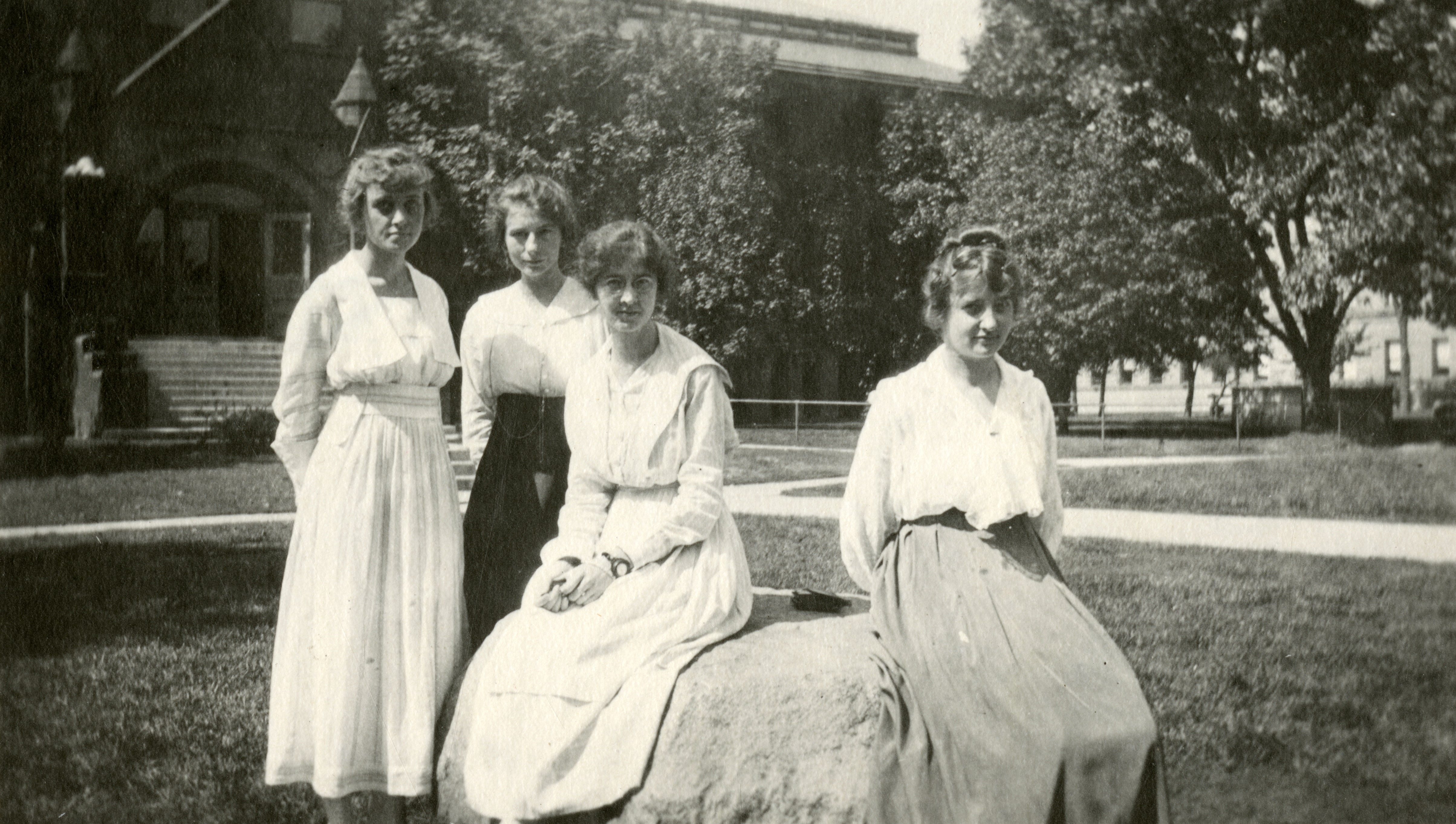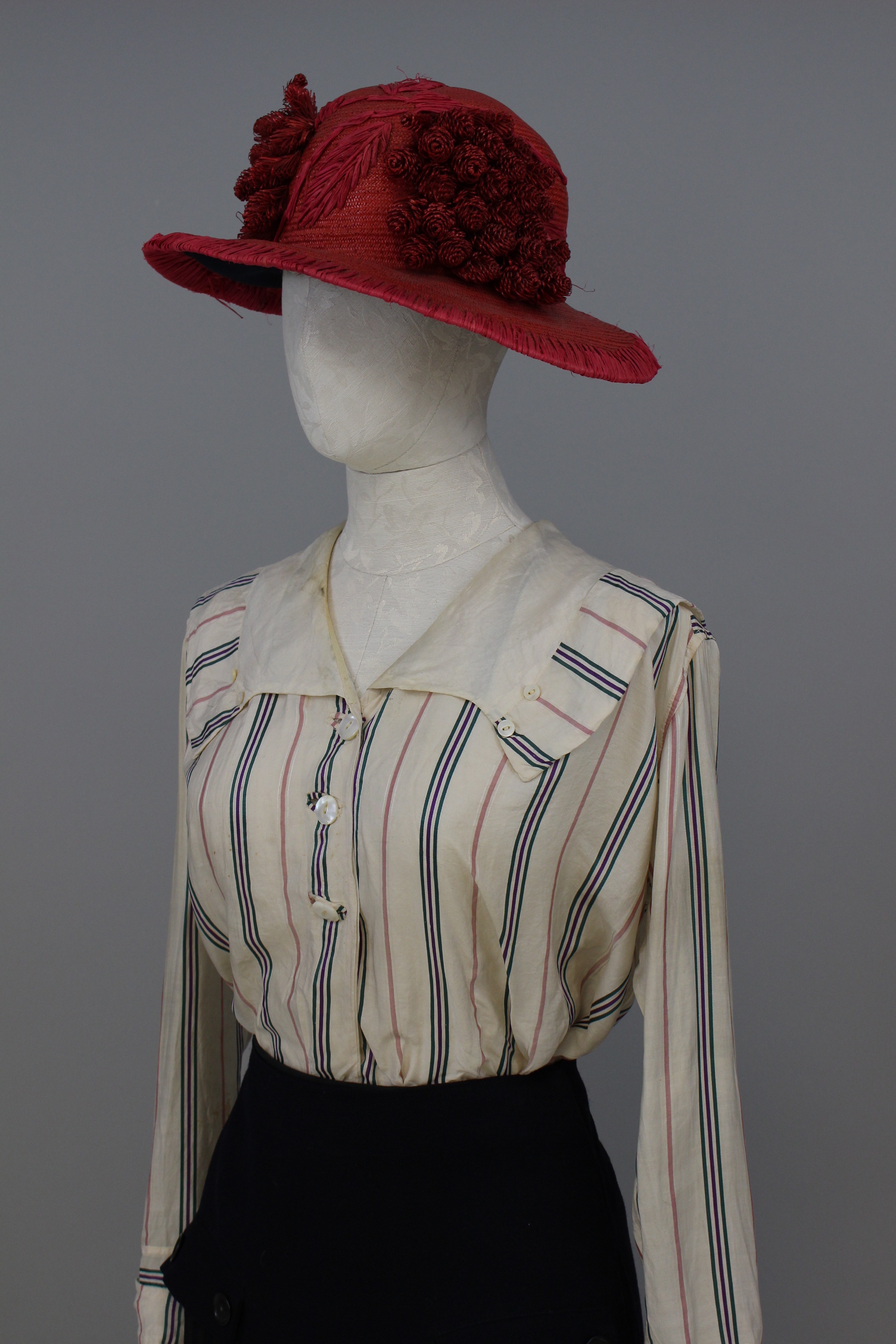
The University of Nebraska–Lincoln’s Department of Textiles, Merchandising and Fashion Design joins the N150 sesquicentennial celebration with a special exhibition, “What We Wore: Dressing Well at UNL.” The display of select garments and accessories from the department’s historic costume collection is on view through May 10 in the Robert Hillestad Textiles Gallery.
“What We Wore” explores the experiences of women at Nebraska through the lens of dress. Garments dating from the 1870s though 1950s, along with relevant images and stories, provide a partial glimpse into women’s experiences as students and faculty. The exhibition was curated by Mary Alice Casto, assistant professor in textiles, merchandising and fashion design.

On Feb. 15, 1869, the University of Nebraska was chartered as a part of the Morrill Act, creating a university to provide a “liberal and practical education” to all Nebraska citizens, including women. In reality, women were often an unwelcomed minority. They were accused of betraying their sex, assuming masculine roles and abandoning their sacred duties in the home. Despite criticism and skepticism about the notion of coeducation, women’s enrollment in American universities such as Nebraska grew steadily from 21 percent in 1870 to 47 percent in 1920. Gradually, American attitudes toward women’s college attendance shifted so that, as historian Barbara Solomon noted, “By World War I, college was a very important option to provide to a daughter in some (social) circles, and outside these circles, it was something to aspire to.”
Early college women were scrutinized for any perceived behavioral or appearance-related infractions. They could be castigated for appearing too masculine or for being excessively fashionable. Early coeds walked a fine line that allowed little room for personal expression through dress. After 1895, however, the pressure to maintain a decorous appearance and a discrete profile on campus began to dissipate. While dressing appropriately was still essential, expectations were more in line with those for other young, unmarried women. The college “girl” had become a fun, healthy, intelligent, well-adjusted example of womanhood, and by the 1920s she began to set her own appearance standards.
“What We Wore” features examples of college women’s dress and links them to key markers of women’s standing in the university’s history. From Alice Frost, the first female graduate, to Louise Pound and her advocacy of athletics for women, to Grace Margaret Morton and “The Arts of Costume and Personal Appearance” — her defining textbook widely used across the nation in home economics education — women, both faculty and students, have played an important role in the university’s history.
The Hillestad Gallery is located on the second floor of the Home Economics Building, 1650 N. 35th St. It is open 8:30 a.m. to 4 p.m. Monday through Friday and by appointment. Admission is free. Guest parking is available near the Home Economics Building and in metered stalls in the Nebraska East Union lot. For more information, visit click here or call 402-472-2911.









